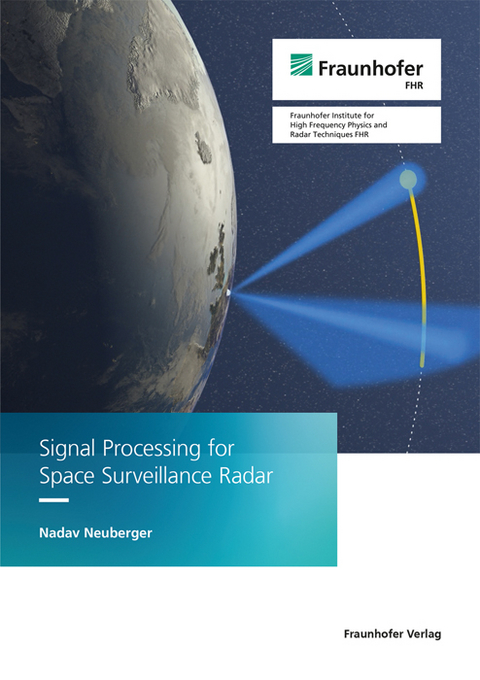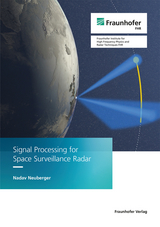Signal Processing for Space Surveillance Radar
Seiten
In recent years, man-made "waste" in near-Earth space is rapidly increasing. This work focuses on the performance of ground-based digital-array radar in the Space Situational Awareness scenario. New tailored radar signal processing methods are presented for improved target detection and parameters estimation. In turn, these lead to an increased accuracy of debris orbit estimation and lowers the probability of collision events with active satellites.
Space Situational Awareness (SSA) by ground-based digital-array radar systems has been attracting global attention in recent years. One of its fundamental tasks is to provide accurate collision forecasting between space debris and active satellites, leading to increased avoidance probability. This is achieved by a rigorous signal processing stage that successfully detects stray space debris and accurately estimates its parameters from the radar data: range, direction-of-arrival, radial velocity, etc. The objective of this research is to improve the radar performance through the adaptation of the signal processing scheme to SSA. It presents the shortcomings of several key aspects of traditional signal processing and proposes new methods for improved target detection and parameter estimation, supported by numerical demonstrations of a real radar system. The above-mentioned techniques ultimately lead to superior estimation accuracy, higher resource efficiency, and robust detection capabilities, contributing to enhanced SSA. Based on this research, new estimation methods and operational modes can be explored in the context of a single station and radar networks, leading to a safer near-Earth space.
Space Situational Awareness (SSA) by ground-based digital-array radar systems has been attracting global attention in recent years. One of its fundamental tasks is to provide accurate collision forecasting between space debris and active satellites, leading to increased avoidance probability. This is achieved by a rigorous signal processing stage that successfully detects stray space debris and accurately estimates its parameters from the radar data: range, direction-of-arrival, radial velocity, etc. The objective of this research is to improve the radar performance through the adaptation of the signal processing scheme to SSA. It presents the shortcomings of several key aspects of traditional signal processing and proposes new methods for improved target detection and parameter estimation, supported by numerical demonstrations of a real radar system. The above-mentioned techniques ultimately lead to superior estimation accuracy, higher resource efficiency, and robust detection capabilities, contributing to enhanced SSA. Based on this research, new estimation methods and operational modes can be explored in the context of a single station and radar networks, leading to a safer near-Earth space.
| Erscheinungsdatum | 06.07.2022 |
|---|---|
| Zusatzinfo | num., mostly col. illus. and tab. |
| Verlagsort | Stuttgart |
| Sprache | englisch |
| Maße | 148 x 210 mm |
| Themenwelt | Mathematik / Informatik ► Informatik |
| Technik ► Luft- / Raumfahrttechnik | |
| Technik ► Nachrichtentechnik | |
| Schlagworte | antenna array designers • Array Signal Processing • B • DoA estimation • Fraunhofer FHR • Radar industry and academic community • radar signal processing • Space Situational Surveillance • Space surveillance community • waveform design |
| ISBN-13 | 9783839618271 / 9783839618271 |
| Zustand | Neuware |
| Informationen gemäß Produktsicherheitsverordnung (GPSR) | |
| Haben Sie eine Frage zum Produkt? |
Mehr entdecken
aus dem Bereich
aus dem Bereich
Buch | Softcover (2024)
BILDNER Verlag
CHF 55,85
Schritt für Schritt einfach erklärt
Buch | Hardcover (2024)
Markt + Technik (Verlag)
CHF 20,90
das Praxishandbuch
Buch | Hardcover (2024)
Markt + Technik Verlag
CHF 27,90




